Torridincolidae
Torrent Beetles
Sergio Antonio Vanin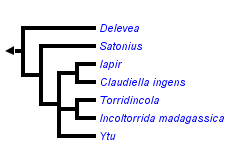


This tree diagram shows the relationships between several groups of organisms.
The root of the current tree connects the organisms featured in this tree to their containing group and the rest of the Tree of Life. The basal branching point in the tree represents the ancestor of the other groups in the tree. This ancestor diversified over time into several descendent subgroups, which are represented as internal nodes and terminal taxa to the right.

You can click on the root to travel down the Tree of Life all the way to the root of all Life, and you can click on the names of descendent subgroups to travel up the Tree of Life all the way to individual species.
For more information on ToL tree formatting, please see Interpreting the Tree or Classification. To learn more about phylogenetic trees, please visit our Phylogenetic Biology pages.
close boxIntroduction
Torridincolidae is a lineage of small aquatic beetles comprised of 34 described species assigned to seven genera, and many other known species waiting to be described. The family was classified into two subfamilies by Endrödy-Younga (1997): Torridincolinae, including the genera Torridincola from Southern and Central Africa, Incoltorrida from Madagascar, and Ytu, Iapir and Claudiella from Brazil; and Deleveinae with the genera Delevea from Southern Africa and Satonius from Japan and China (Beutel & Vanin, 2005; Hájek & Fikáček, 2008), although this scheme may not reflect the phylogeny (Beutel, 1999).
Torridincolids can be diagnosed as follows: Small sized beetles (1.0–2.7 mm total length), black or dark colored, frequently with metallic sheen. Body relatively short and broad, flattened, with distinct pronotal and elytral angles (Torridincolinae), or distinctly convex and laterally rounded (Deleveinae). Head prognathous. Antennae very short, 9- or 11-segmented. Elytra laterally rounded, with smooth surface and fine pubescence (Deleveinae) or almost parallel-sided anteriorly and with distinct striae (Torridincolinae). Abdomen with 4–5 visible ventrites. Legs long, tibiae slender; tarsi 4–5 segmented (Delevea); proximal tarsomeres short, distal two tarsomeres elongate. (Reichardt, 1973; Beutel & Vanin, 2005).
Larvae are known for all genera except Incoltorrida. Body subparallel and sub-cylindrical (Delevea), onisciform (Claudiella and Iapir) or disc shaped and strongly flattened (Satonius, Torridincola and Ytu). Long contact hairs present at lateral margin of thoracic tergites in most genera (absent in Claudiella, Iapir and Torridincola). Head subprognathous or prognathous, with 3–4 stemmata inserted in a lateral protuberance. Abdominal segments I–VIII with long, pseudo-segmental spiracular gills, which insert laterally or dorsolaterally. Usually with fixed elongate urogomphi present at posterolateral margin of segment IX, absent in Torridincola (Beutel & Vanin, 2005).
The described torridincolid pupae are adecticous, exarate, characterized by the presence of one pair of spiracular gills covered with a fine plastron meshwork on each side of the first two abdominal tergites. The pupa remains inside the last larval exuvia, with the spiracular gills exposed (Reichardt, 1973; Costa et al., 1988; Endrödy-Younga, 1997; Vanin & Costa, 2001).
All known torridincolids are aquatic in all phases of their life cycle and feed mainly or exclusively on algae or blue-green algae (Reichardt, 1973; Endrödy-Younga 1997; Beutel & Vanin, 2005). Torridincolinae live in different types of hygropetric habitats, as in the spray zone of waterfalls or similar biotopes found in rocky roadcuts, and in fast-flowing mountain streams or rivulets, in places where the rocky substrate is covered usually with a few millimeters of water, no more than two or three centimeters deep (Reichardt, 1973; Vanin, 1981; Beutel & Vanin, 2005). Sometimes, adults are found under tufts of vegetation or detritus. Adults do not swim but move around very slowly. Deleveinae live in seasonal mountain streams (Delevea) or in hygropetric habitat represented by seepages covered with algae (Satonius) (Satô, 1982; Beutel & Vanin, 2005; Hájek & Fikáček, 2008). Torridincolids are, in general, found in very clear water, but adults and larvae of Iapir britskii were collected in a heavily polluted stream close to a small city in Southern Brazil (Beutel & Vanin, 2005). Léonard & Dessart (1994) reported that, in Central Africa, torridincolids possibly have a symbiotic relationship with Podostomaceae, pollinating the flowers of riverweeds (Podostemaceae) which grow on rocks in rapids and waterfalls of rivers.
Characteristics
ADULTS
(from Reichardt, 1973; Reichardt & Vanin, 1976; Beutel & Vanin, 2005)
- Head prognathous and retracted into prothorax.
- Antennae very short, 9-segmented (Torridincolinae) or 11-segmented (Deleveinae); scapus and pedicel together forming an urn-shaped structure.
- Distal parts of mouthparts almost completely concealed between labrum and mentum.
- Submentum completely fused with head capsule.
- Pronotum rounded laterally, propleura not reaching anterior margin of pronotum.
- Prosternal process broad, apically truncate and overlapping with mesoventrite (Torridincolinae) or rounded and articulating with mesoventrite (Deleveinae).
- Elytra laterally rounded, almost parallel-sided anteriorly and with distinct striae (Torridincolinae) or with smooth surface and fine pubescence (Deleveinae).
- Metaventrite without transverse suture; discrimen short or missing.
- Metacoxae broad, without metacoxal plates.
- Hind wings well developed (reduced in Satonius kurosawai), with oblongum, reduced anal field, and a fringe of hairs with a helical surface structure along entire margin.
- Elytra laterally rounded, almost parallel-sided anteriorly and with distinct striae or with smooth surface and fine pubescence (Deleveinae).
- Tibiae long and slender.
- Tarsi 5-segmented (Delevea) or 4-segmented; proximal tarsomeres very short, distal two tarsomeres elongate, claws relatively long.
- Abdomen with five or four visible ventrites; ventrite IV distinctly shorter than ventrite III, completely concealed in species of Iapir and Claudiella.
- Sternite VII with (Torridincolinae) or without plastron (Deleveinae).
- Male genitalia with parameres slender, with two distal setae; median lobe cleft longitudinally.
LARVAE
(from Reichardt, 1973; Costa et al., 1988, Endrödy-Younga, 1997; Beutel, 1998; Beutel et al., 1999; Costa & Vanin, 2001; Beutel & Vanin, 2005)
- Body subparaleel and subcylindrical (Delevea), onisciform (Iapir and Claudiella) or disc-shaped and strongly flattened (Satonius, Toridincola and Ytu). (Larva of Incoltorrida unknown).
- Long contact hairs usually present at lateral margin of thoracic tergites (absent in Iapir, Claudiella and Torridincola).
- Head subprognathous or prognathous, with three or four stemmata insert on a lateral prominence.
- Antenna with short basal segment and elongate distal antennomere; sensorial appendage reduced, flattened, placed at distal part of antennomere 2.
- Mala of maxillae with fixed external tooth and a row of articulated flattened spines.
- Thorax about as long as abdomen (except Delevea).
- Abdomen with nine segments visible from above
- Abdominal segments I–VIII with long, pseudo-segmental spiracular gills, which insert laterally or dorsolaterally.
- Segment IX with a pair of fixed, elongate urogomphy (absent in Torrincola).
- Segment X present as paired anal flaps.
GENERAL
- The chromosome number of Ytu zeus is 2n=20, and the sex chromosome system is of the XY type (Mesa & Fontanetti, 1985).
- Most diagnostic characters of the species of torridincolids are based on male genitalia.
Taxonomy
Torridincolidae was established for an Afrotropical species, Torridincola rhodesica Steffan, 1964. Three years later, Reichardt & Costa (1967) described the first Neotropical torridincolid and described Ptyopteryx britskii. As the name of the genus was preoccupied, it was changed to Hintonia Reichardt, 1973 and subsequently to Iapir Py-Daniel, Fonseca & Barbosa, 1993. Steffan (1973) described two new species of Torridincola and a new African genus, Incoltorrida. Reichardt (1973) published a critical study of the suborder Myxophaga, including the description of nine new Neotropical species of Torridincolidae, eight of them in the new genus Ytu. Reichardt (1976) described Delevea, with a single species from South Africa. Reichardt & Vanin (1976) described Claudiella, the third Neotropical genus. Satô (1982) discovered the family in Japan and described Delevea kurososawai, the only hitherto known Japanese species of torridincolid. Endrody-Younga (1997) described a new African species of Delevea, erected the genus Satonius for Delevea kurososawai, and established two subfamilies: Torridincolinae and Deleveinae. Additional torridincolid species were described by Reichardt & Vanin (1977 – review of Ytu and eight new species), Vanin (1978 – a new species of Ytu), Spangler (1980 – a new species of Ytu), Vanin (1991 – a new species of Ytu), Fonseca, Py-Daniel & Barbosa (1991 – a new species of Iapir) and Hájek & Fikáček (2008 – review of Satonius and three new species from China).
- Torridincolidae Steffan, 1964
- Torridincolinae Steffan, 1964 (type genus: Torridincola Steffan, 1964)
- Torridincola Steffan, 1964 (type species: T. rhodesica Steffan, 1964)
- Incoltorrida Steffan, 1973 (type species: I. madagassica Steffan, 1973)
- Ytu Reichardt, 1973 (type-species: Ytu zeus Reichardt, 1973)
- Iapir Py-Daniel, Fonseca & Barbosa, 1993 (type species: Ptyopteryx britiskii Reichardt & Costa, 1967); syn. Hintonia Reichardt, 1973
- Claudiella Reichardt & Vanin, 1976 (type species: Claudiella ingens Reichardt & Vanin, 1976)
- Deleveninae Endrody-Younga, 1997 (type genus: Delevea Reichardt, 1976)
- Delevea Reichardt, 1976 (type species: Delevea bertrandi Reichardt, 1976)
- Satonius Endrödy-Younga, 1997 (type species: Delevea kurosawai Satô, 1982)
Discussion of Phylogenetic Relationships
Phylogenetic analyses of Myxophaga carried out by Beutel et al. (1999) using larval characters, and Beutel (1999) based on characters of adults and larvae, support the monophyly of the Torridincolidae. Adult autapomorphies of the family include the characteristic shape of scapus and pedicel together to form a stout urn-shaped structure; the strongly broadened prosternal process; and, the tubular field present on the pleurites of the abdominal segments VI–VII. Larvae autapomorphies are the stemmata insert on a strongly pronounced elevation; sensorial appendage of subapical antennomere flattened, embedded in an apical excavation of antennomere II; apex of mala with an external fixed tooth and several flattened and articulated teeth; and, labial gland reservoirs present.
According to Beutel (1999), the resulting strict consensus cladogram of the ten most parsimonious trees obtained is: (Delevea (Satonius ((Torridincola, Incoltorrida) (Iapir, Claudiella) Ytu))). Delevea is the sistergroup of the remaining genera of Torridincolidae, and Satonius is the sistergroup of Torridincolinae. Therefore, according to this hypothesis, Deleveinae (sensu Endrödy-Younga, 1997) is paraphyletic and Torridincolinae is monophyletic. Torridincolidae is a Gondwanian clade and its monophyly is supported by several synapomorphies, including, in adults, the head elongate and conical, the vertex of head with a conspicuous keel, the prosternal process broad, apically truncate, overlapping the mesothoracic ventrite, and the presence of a plastron of microtrichia present on abdominal sternites and, in larvae, the presence of frayed labral setae. Relationships among the genera of Torridincolinae are still unclear, but the African clade (Torridincola, Incoltorrida) possibly will emerge as the sister group of the Neotropical clade ((Iapir, Claudiella) Ytu).
References
Beutel, R.G. 1999. Phylogenetic analysis of Myxophaga (Coleoptera) with a redescription of Lepicerus horni (Lepiceridae). Zool. Anz., (1998/99):291-308.
Beutel, R.G., D.R. Maddison, and A. Haas. 1999. Phylogenetic analysis of Myxophaga (Coleoptera) using larval characters. Systematic Entomology, 24:171-192.
Endrödy-Younga, S. 1997. Active extraction of water-dissolved oxygen and descriptions of new taxa of Torridincolidae (Coleoptera: Myxophaga). Annals of the Transvaal Museum, 36(24):313-332.
Hajek, J. and M. Fikacek. 2008. A review of the genus Satonius (Coleoptera: Myxophaga: Torridincolidae): taxonomic revision, larval morphology, notes on wing polymorphism, and phylogenetic implications. Acta Entomologica Musei Nationalis Pragae 48(2): 655-676.
Mesa, A. and C. S. Fontanetti. 1985. The chromosomes of a primitive species of beetle: Ytu zeus (Coleoptera, Myxophaga, Torridincolidae). Proceedings of the Academy of Natural Sciences of Philadelphia 137(2): 102-105.
Reichardt, H. 1973. A critical study of the suborder Myxophaga, with a taxonomic revision of the Brazilian Torridincolidae and Hydroscaphidae (Coleoptera). Arquivos de Zoologia, S. Paulo 24(2):73-162.
Reichardt, H. and S. A. Vanin. 1976. Two new Torridincolidae from Serra do Cipó, Minas Gerais, Brazil (Coleoptera, Myxophaga). Studia Entomologica 19(1-4):211-218
Sato, M. 1982. Discovery of Torridincolidae in Japan. Annotationes Zoologicae Japonenses, 55, 276-283
Spangler, P. J. 1980. A new species of Ytu from Brazil (Coleoptera: Torridincolidae). Coleopterists Bulletin 34(2):145-158.
Steffan, A. W. 1964. Torridincolidae, coleopterorum nova familia e regione aethiopica. Entomologische Zeitschrift, 74, 193-200.
Vanin, S. A. and C. Costa. 2001. Description of immature stages of Claudiella ingens Reichardt & Vanin, 1976 and comparative notes on other Torridincolidae (Coleoptera, Torridincolidae). Aquatic Insects 23(1):1-10.
Title Illustrations

| Scientific Name | Iapir britskii |
|---|---|
| Identified By | Cleide Costa |
| Life Cycle Stage | adult |
| View | dorsal |
| Copyright |
© 2011 Cleide Costa

|
| Scientific Name | Iapir britskii |
|---|---|
| Specimen Condition | Dead Specimen |
| Identified By | Cleide Costa |
| Life Cycle Stage | larva, final instar |
| View | dorsal |
| Size | 2.3 mm |
| Copyright |
© 2011 Cleide Costa

|
| Scientific Name | Ytu Zeus |
|---|---|
| Specimen Condition | Dead Specimen |
| Identified By | Hans Reichardt |
| Life Cycle Stage | adult |
| View | dorsal |
| Size | 1.6 mm |
| Copyright |
© 2011 Cleide Costa

|
| Scientific Name | Ytu zeus |
|---|---|
| Specimen Condition | Dead Specimen |
| Identified By | Sergio Antonio Vanin |
| Life Cycle Stage | larva, final instar |
| View | dorsal |
| Size | 2.1 mm |
| Copyright |
© Cleide Costa

|
About This Page
I thank Cleide Costa (Museu de Zoologia, São Paulo University, Brazil) and Jirí Hájek (Naródini Muzeum, Praha, Czech Republic) for providing permission to use previously published figures of torridincolids (drawings – Costa et al., 1988; photographs – Hájek & Fikácek, 2008), and Ricardo Pires Vanin for the electronic treatment of the figures.

Departamento de Zoologia, Instituto de Biociências, Universidade de São Paulo
Correspondence regarding this page should be directed to Sergio Antonio Vanin at
Page copyright © 2011
 Page: Tree of Life
Torridincolidae. Torrent Beetles.
Authored by
Sergio Antonio Vanin.
The TEXT of this page is licensed under the
Creative Commons Attribution-NonCommercial License - Version 3.0. Note that images and other media
featured on this page are each governed by their own license, and they may or may not be available
for reuse. Click on an image or a media link to access the media data window, which provides the
relevant licensing information. For the general terms and conditions of ToL material reuse and
redistribution, please see the Tree of Life Copyright
Policies.
Page: Tree of Life
Torridincolidae. Torrent Beetles.
Authored by
Sergio Antonio Vanin.
The TEXT of this page is licensed under the
Creative Commons Attribution-NonCommercial License - Version 3.0. Note that images and other media
featured on this page are each governed by their own license, and they may or may not be available
for reuse. Click on an image or a media link to access the media data window, which provides the
relevant licensing information. For the general terms and conditions of ToL material reuse and
redistribution, please see the Tree of Life Copyright
Policies.
- Content changed 27 February 2011
Citing this page:
Vanin, Sergio Antonio. 2011. Torridincolidae. Torrent Beetles. Version 27 February 2011. http://tolweb.org/Torridincolidae/9050/2011.02.27 in The Tree of Life Web Project, http://tolweb.org/





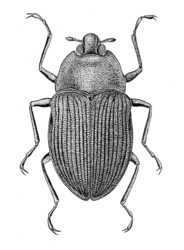
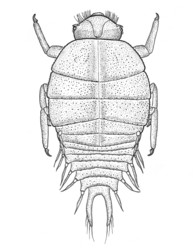
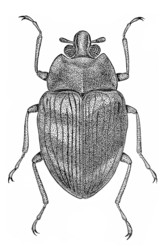
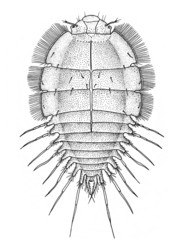
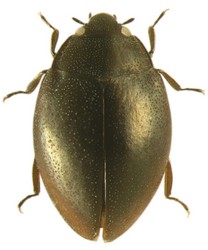
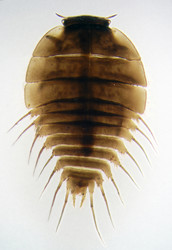





 Go to quick links
Go to quick search
Go to navigation for this section of the ToL site
Go to detailed links for the ToL site
Go to quick links
Go to quick search
Go to navigation for this section of the ToL site
Go to detailed links for the ToL site